#Shichi (7)
Text

saw a photo that i had to redraw. fuckers (orig. under cut)


#splatoon#splatoon oc#oc x oc ship#oc x oc art#Agent 3#Inktoling OC#inktoling agent 3#Tsunaomi (3)#sanitized octoling#sanitized octoling oc#Shichi (7)#Tsushi (21)#my art
13 notes
·
View notes
Note
✨ — twinkle, twinkle, little star!

a headcanon from my muses’ childhood or and a nursery-rhyme they remember from that time.
Until the age of seven, Tsuna spent every waking moment with her mother, for her father was often on long sea voyages from Othard to Thavnair. When Orihime would catch wind of his ship's arrival, it would always mean a feast for the three of them to celebrate. Her mother's sekihan was a treat she always looked forward to-- and for more than just the taste.
Her father was meant to reach shore once more on the week of Tsuna's coming-of-age (obitoki-no-gi), but with the invasion of the Garleans becoming an imminent threat, his voyage was delayed. Tsuna and her mother ate sekihan that day alone, unknowing that it would be the last.
While not a nursery-rhyme per se, her favorite bedtime story of her mother's was the one of the Ruby Prince: a tale in which a Hyuran fisherman and an Auri princess were brought together by a Kojin and wed in a palace under the sea. Every time her mother told it, the tale would be embellished-- much to Tsuna's delight-- but what Tsuna found the most fascinating was that the son they bore was said to have had almost no scales at all.
#thank you for sending!!#never done this before for Tsuna so im stretching my legs#some notes: sekihan is sticky rice with adzuki beans usually eaten in general celebration or for a young girl's coming of age/menarche#shichi-go-san celebrates when a child reaches 3 5 and 7 but obitoki-no-gi are for girls only#so I imagine that was one of the first times Tsuna recalls wearing a kimono#as for the bedtime story-- im glad i have an in-game reason to explain her predisposition for Hyur men LOL don't @ me#asks ; playing postmoogle#lore ; weaving a story.
3 notes
·
View notes
Text

I hope she gets everything she wants for her birthday
#toko#o-toko#one piece toko#one piece#i gave her a Shichi-Go-San candy bag since Wano is based on traditional Japan and that's the only birthday tradition I could really find#it fits though I think because she'd be turning 7#i love my precious daughter#happy birthday Toko#also used this as an excuse to test out markers I was gifted#my art#dittobooty art
3 notes
·
View notes
Text

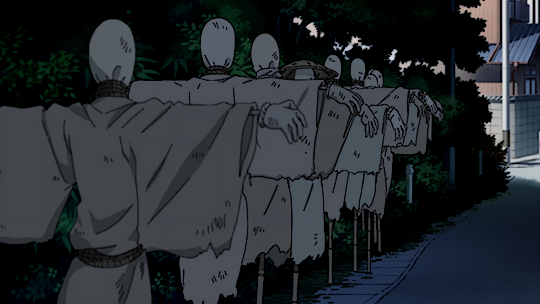
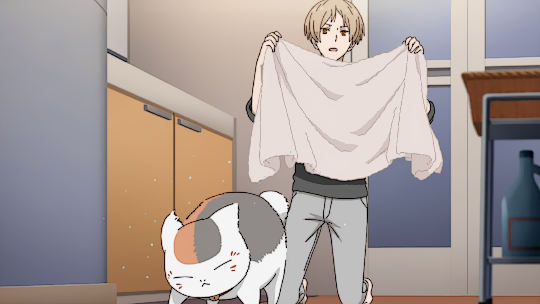
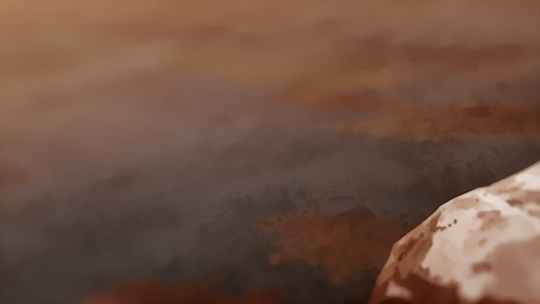
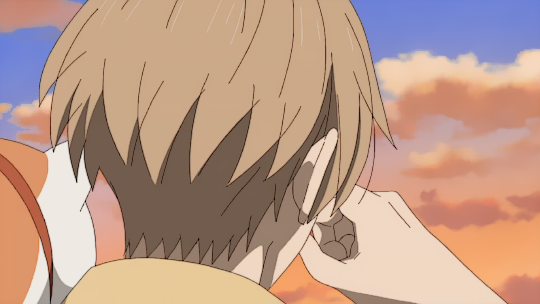
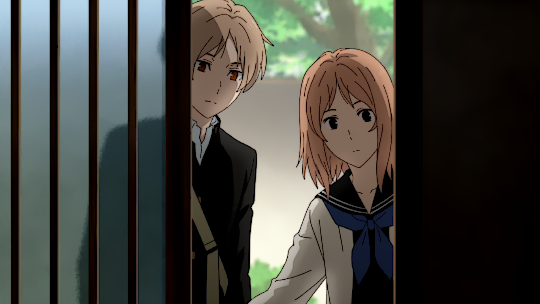

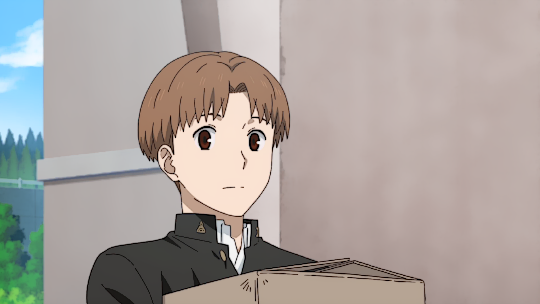
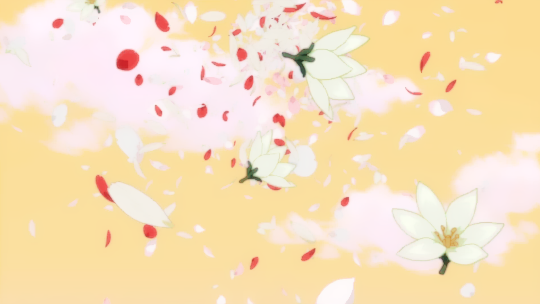

airing on october 7, 2024
NATSUME YUUJINCHOU SHICHI (2024)
created by midorikawa yuki
#natsume yuujinchou#natsumeedit#gif#*#gif: natsume yuujinchou#userroh#usermoh#userinahochi#userzuura#usernamie#usermoonz#usergojoana#homuras#SOON
208 notes
·
View notes
Text





Natsume Yuujinchou Shichi
Announcement of Season 7 to celebrate the anime's 15th Anniversary
#Natsume Yuujinchou#Natsume's Book of Friends#NatsuYuu#Yuki Midorikawa#Shuka#Natsume Yuujinchou Season 7#New Anime#Best news I've heard today#this has also kinda of triggered me to finish all my NatsuYuu WIPs#Gifs
971 notes
·
View notes
Text
DFO strikes again !
Almost everybody in DFO fandom, might have heard about the weird coincidence where AFO's prison number 1541 spells Hisashi. Well, folks, we found Hisashi again! And this time it is in Izuku's Birthday. 15th of July. July =7
1 = ichi (kanji 一 )
5= go/sa (nanori reading) (kanji 五)
month 7 = nana, shichi (kanji 七)
ichi (一) can also be read as hi
(五) can be sa, we already know.
nana, shichi (七) also have a reading shi
(N.B. the reading shi is not used as it is homophone to shi (death) in japanese. They consider it unlucky.)
15th of July implies hi-sa-shi.
It's so mysterious, that we find the man's name in so many ways but the man himself doesn't show up. (or does he? 👀)
62 notes
·
View notes
Text
Why "day of tears"? It might be a question on many people's minds. Let me explain why.

that day was designated based on a wordplay "7" and "3".
First, Japanese word order is classified as subject – object – verb, such as「ぼく(I)は / プリパラ(Pripara)に / 行く(go)」. Please note that "は(ha)" & "に(ni)" are one of the postpositional particle.
涙 = な み だ(na mi da)
7 (naa)
3 (mii)
だ (connects the subject of a sentence to a subject complement. such as "be".)
BTW, 7 is often read as nana, shichi, hichi, or naa. Similarly, 3 is often read as san or mii.
In Japanese, when counting "1, 2, 3," there are two common ways to say that : "ichi, nii, san" or "hii, huu, mii". Umm…… It's difficult to explain…… After mixing them, it feels a bit unnatural.
But July 3rd isn't a public holiday. ……Seriously, why????? We just need one day off.
Many people nowadays are struggling with dry eyes!
Huh? It feels good to have tears in my eyes……(T_T)thanks
for your reference:
I bought code cards that can be used in Aipri verse on Mercari(Japanese flea market application), but they haven't arrived yet~!
Come to think of it, I had forgotten that these days Japan doesn't deliver regular mail on Saturdays, hahaha
Why do my tumblr posts turn into like Chinese font when I post Twitter links on Tumblr……? a little hard to read(T_T)
It looks the "怪レい日本语"(suspiciously Japanese) haha
(Aside to that, the right expression is 怪しい日本語.
"怪レい日本语" is a Japanese internet meme that funny parodies the unnatural and peculiar ways Chinese language is sometimes used in very cheap products for Japanese, despite efforts by Chinese vendor.
BTW, these are famous Twitter accounts.
中華業者商品画像bot / 中國の怪レい日本语bot)
But I also use「怪レい英语」(suspiciously English) too. I'm fluent in gibberish, if that counts! I have tears in my eyes. I want to use crying emoji but somehow it didn't appear move when I push windows + period. I reboot my computer……
ていうか、もう寝よう。(星宮いちご)
36 notes
·
View notes
Text
UPCOMING 2024 ANIME WITH NEW SEASON
Looking for anime to watch/rewatch? Try these series as you wait for the new seasons this year!






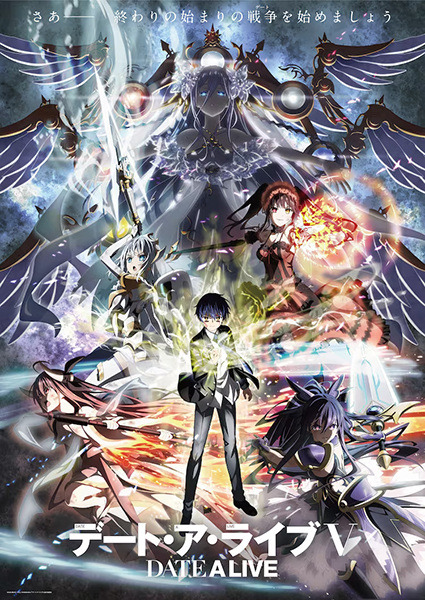

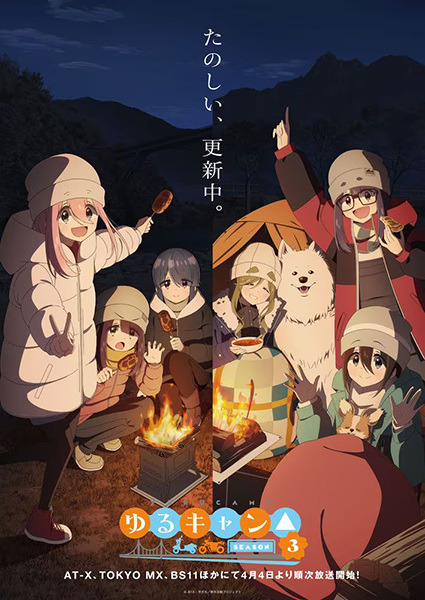
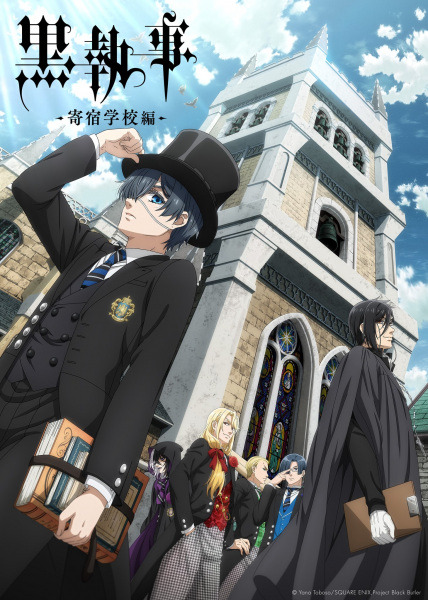

SPRING ANIME 2024
Kono Subarashii Sekai ni Shukufuku wo! Season 3
Kimetsu no Yaiba: Hashira Geiko-hen
Tensei shitara Slime Datta Ken Season 3
Mushoku Tensei II: Isekai Ittara Honki Dasu Part 2 [Genre Warning: Ecchi]
Boku no Hero Academia Season 7
Maou Gakuin no Futekigousha Season 2 Part 2
Date A Live Season 5
Mahouka Koukou no Rettousei Season 3
Yuru Camp Season 3
Hibike! Euphonium Season 3
Kuroshitsuji: Kishuku Gakkou-hen
Shinigami Bocchan to Kuro Maid Season 3
More series under the cut!
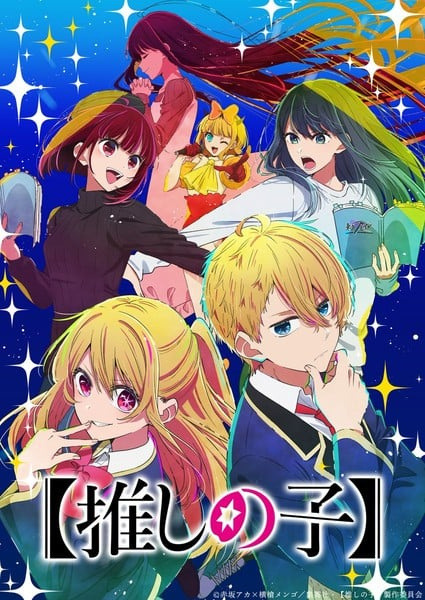
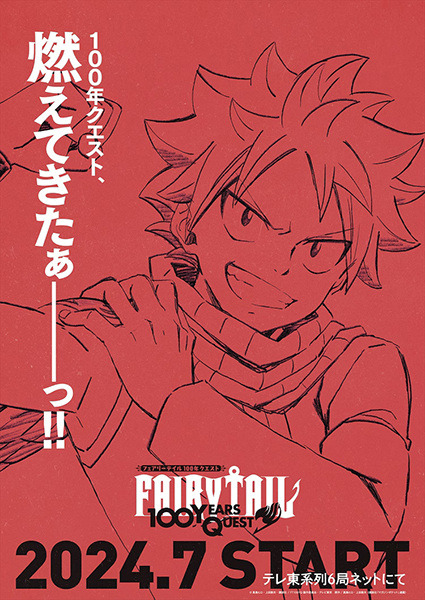
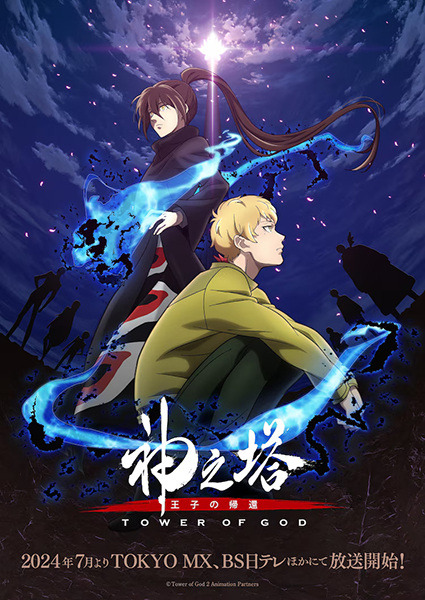

SUMMER ANIME 2024
Oshi no Ko Season 2
Fairy Tail: 100 Years Quest
Kami no Tou Season 2
Shy Season 2

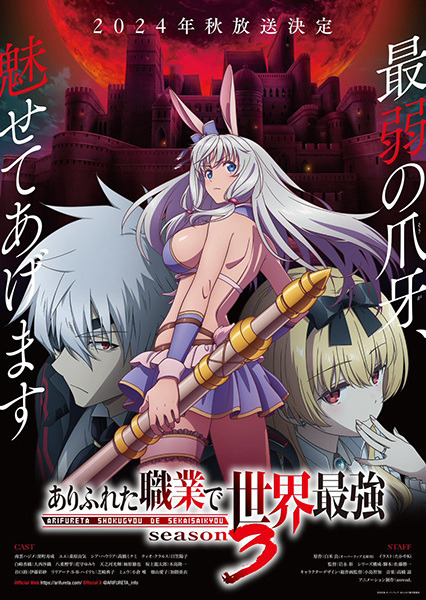
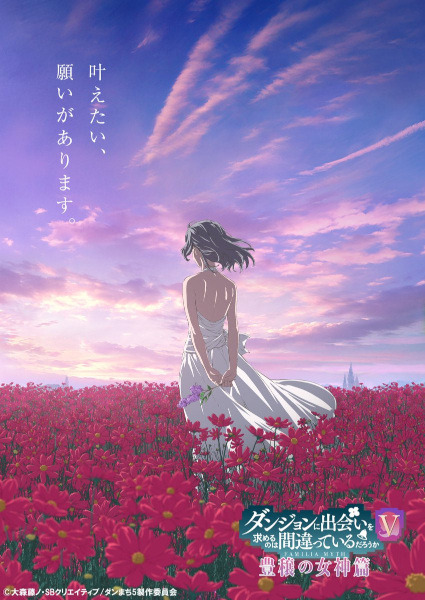

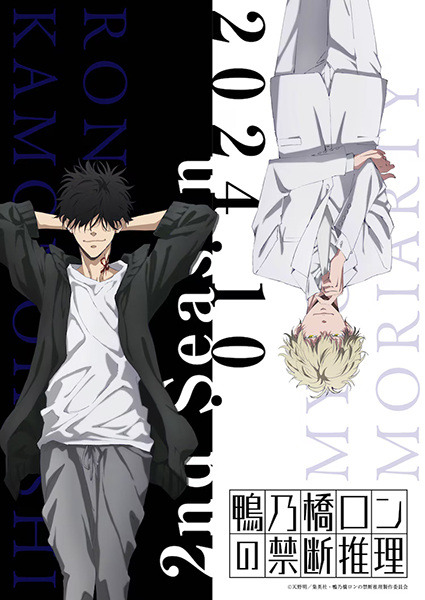
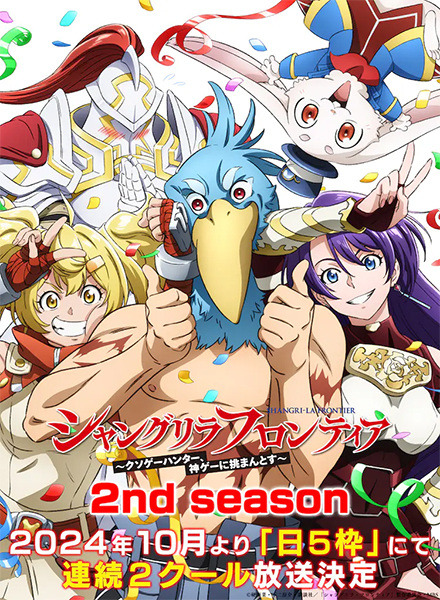

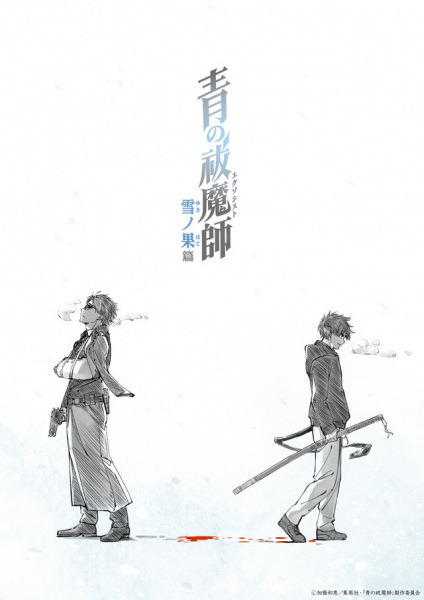
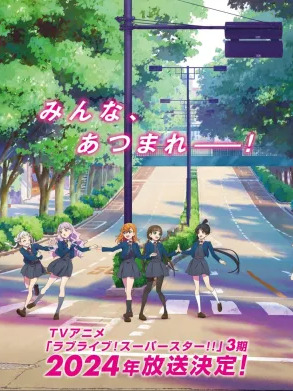



FALL ANIME 2024
Re:Zero kara Hajimeru Isekai Seikatsu Season 3
Arifureta Shokugyou de Sekai Saikyou Season 3
DanMachi Season 5
Sword Art Online Alternative: Gun Gale Online Season 2
Kamonohashi Ron no Kindan Suiri Season 2
Shangri-La Frontier Season 2
Natsume Yuujinchou Shichi (Season 7)
Ao no Exorcist: Yuki no Hate-hen
Love Live! Superstar!! Season 3
Rurouni Kenshin: Meiji Kenkaku Romantan - Kyoto Douran (Season 2)
Nanatsu no Taizai: Mokushiroku no Yonkishi Season 2
Shin Tennis no Oujisama: U-17 World Cup Semifinal
#animanga#anime#konosuba#kimetsu no yaiba#tensei shitara slime datta ken#mushoku tensei#boku no hero academia#maou gakuin no futekigousha#date a live#mahouka koukou no rettousei#yuru camp#hibike! euphonium#kuroshitsuji#shinigami bocchan to kuro maid#nonedit#i will watch only about half of this list this year lol#i am most looking forward to natsuyuu#because it's been a while and i already gave up a long time ago expecting for another season#but here we are and i am so excited about it!! <3
40 notes
·
View notes
Text
I just watched Yang Jian, soooo.... we're talking about that today.
More specifically these a-holes:
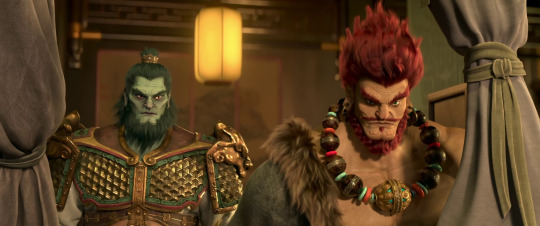


Buckle up.
Known as the 4 Heavenly kings, the 4 Diamond Kings of Heaven, or Fēng Tiáo Yǔ Shùn (風調雨順; lit. 'Good climate'), these guys play a pretty big part in the Buddhist religion. They are often depicted on doorways, two on each side, and like many other groups of 4 in Chinese myth are linked with the cardinal directions.
Mo Li Hung/Duōwén Tiānwáng/Vessavana/Bishamon-ten: Protector of the North and ruler of rain, as shown by his fancy umbrella, the Umbrella of Chaos. Opening it turns the skies pitch dark, and turning it upside down causes massive storms. (Fun fact: also one of the Japanese Shichi-fujin/7 Gods of Fortune)
Mo Li Ching/Zēngzhǎng Tiānwáng/Virūlhaka/Zōchō-ten: Protector of the South and a god of plant life and growth. He has a super special sword, Blue Cloud, that can cause massive black winds and turn into a bunch of spears that turn people to dust.
Mo Li Hai/Chíguó Tiānwáng/Dhatarattha/Jikoku-ten: Protector of the East and god of music. As a result, his main weapon is his sick guitar that can mess up nature and cause all sorts of weird crap to happen.
Mo Li Shou/Guăngmù Tiānwáng/Virūpakkha/Kōmoku-ten: Protector of the East and an all-seeing deity that watches over everything. His tools are a magic bag and the goodest little guy Hua-hu Tiao, a white mink. His shoulder-buddy can also be a snake or dragon, depending on the version, but I like the fluffer.
Now, these guys have important jobs and are well respected in their own rights and stuff, but their most famous Chinese myth seems to be that time they got their asses kicked by Erlang Shen.
Okay, I guess that isn't entirely accurate as he and Nezha were mainly helping some guy named Huang Tianhua, but still. (Also don't expect any info on that Tianhua guy, I got nothing)
Anyways, the story starts when some guys pray for help in battle and for some reason the 4 brothers decide it's totally worth it to go down to the mortal realm themselves along with 1,000 celestial soldiers to kick some ass. Mo-li Shou sends his little floofer to go around and eat the opposing army's soldiers while the big boys kicked butt, but unfortunately one of the soldiers Hua-hu Tiao ate was Erlang Shen, here called by his other name Yang Jian. Erlang doesn't like that very much, so he rips his way out of Hua-hu, killing it, then transforms himself to look like it and sneaks back to his 'master,' waiting for the moment to strike.
Back at the plot, Nezha manages to break the 4 kings' divine weapons, making an opening for Tianhua to kill 3 of them, leaving only Mo-li Shou. Turning to his trusty fur-buddy to bail him out, Shou tries to sic Hua-hu at them, but surprise! That's actually Erlang Shen who bites his hand clean off. The ensuing agony gives Tianhua the distraction he needs to un-alive the last brother and win the day.
And then I guess they got out of the underworld on good behavior or something, because they continued to be important gods in the pantheon for many centuries to come.
 ̄\( ´-`)/ ̄
Sh*tpost Masterlist
#mythology sh*tposting#chinese mythology#investiture of the gods#journey to the west#chinese myth character inspo#new gods yang jian#yang erlang#yang jian#erlang#erlang shen#4 heavenly kings#new gods#new gods nezha reborn#nezha#lego monkie kid#lmk
84 notes
·
View notes
Text
My Thoughts of Ais’s Ending
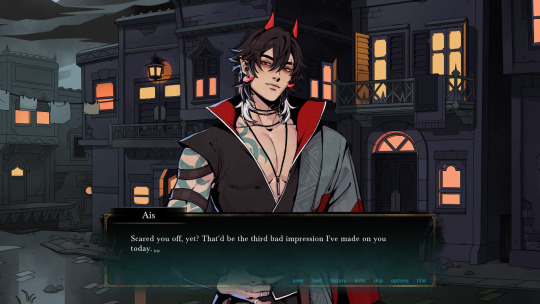
{Note: Images screenshotted from the Alchemist Origin}
[Image ID: Ais: “Scared you off, yet? That’d be the third bad impression I’ve made on you today.”]
In terms of giving ‘bad impressions’ to strangers, this is an altogether familiar feeling.
My family’s heritage is a bit of Eastern Asian [Chinese] and Southeast Asian [Vietnamese]. I vividly recall times of my mother pinching really, really hard on the back of my shoulder—the shoulder nearest to her reach—when I wasn’t behaving 'right'
Next: the three bad impressions in one day bit.
[More under the cut/possible spoiler territory]
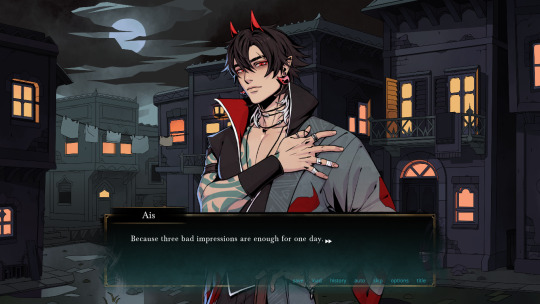
[Image ID: Ais: “. . . Because three bad impressions are enough for one day.”]
Several already have noted that Ais is an Oni, and therefore Japanese coded.
Looking into Japanese numerology really quick, [quoted from Wikipedia here] there’s the following to consider: "yon (4) and nana (7) are preferred to shi and shichi. It is purported that this is because shi is also the reading of the word death (死), which makes it an unlucky reading (see tetraphobia) . . .”
If Ais made a FOURTH bad impression to MC, it’d possibly be catastrophic.
This could imply Ais is highly superstitious, or at the very least, picks and chooses about certain things to be superstitious about.
That’s primarily the only thing that stood out to me . . . and honestly, Lyra [my Alchemist for Touchstarved] may recognize some of the superstitions/traditions Ais mentions/surrounds himself in. I don’t know yet for sure.
Two years, is all. Two. Years. Lol.
If you read this far, thank you very much!
#Touchstarved#Touchstarved game#Touchstarved Ais#Ais#toeridiaorbust#sounddrive#analysis#scene analysis#character analysis
200 notes
·
View notes
Text
Oh, here's a fun thing about my main splatoon OCs: A friend (Jean) helped me decide on the way their names would be spelled in Japanese. I obviously do not speak Japanese, so this is just me reporting their decisions.
Tsunaomi would be 津脳ミ, with some caveats:
津 (tsu) meaning port/harbor
脳 (nao) meaning brain/memory
ミ (mi) as in, the third note in the western musical scale
Jean did suggest a full kanji name, but we liked the combination of kanji and katakana as a way to make her name feel more "foreign," similar to how Nintendo does Marina's dialogue in the Japanese text.
Shichi is fun, since his name is derived from the number しち (Seven) as in, 10,007. However, Jean suggested that his name could be spelled 死針
死 (shi) as in death
針 (chi) as in needle
The second character is more referring to like, a sewing pin or a fish hook as opposed to a medical needle, but I feel like the implication still works!
Eden, meanwhile, had a much easier name! For this one, I did the research which lead me to a forum post discussing the King James Bible. So, her name is taken directly from the Japanese translation for the Garden of Eden.
エデン which is more like "ai-dan" but it's. How it's spelled. That's how it's spelled, blame the bible.
#the cassandra truth#splatoon ocs#From These Heights; Splatoon Verse#Tsunaomi (3)#Eden (8)#Shichi (7)#yeah sure that'll be his tag flkdgsd
3 notes
·
View notes
Text
Shoujosei (Shoujo and Josei) Anime to look forward to in 2024
With the return of Kimi no Todoke after 12 years, I welcome all to the Shoujo renaissance! Let’s roll on the hype train! (MyAnimeList links are in titles)
Winter Anime Season (January - March)
Momochi-san Chi no Ayakashi Ouji Airs January 6th
Loop 7-kaime no Akuyaku Reijou wa, Moto Tekikoku de Jiyuu Kimama na Hanayome Seikatsu wo Mankitsu suru Airs January 7th
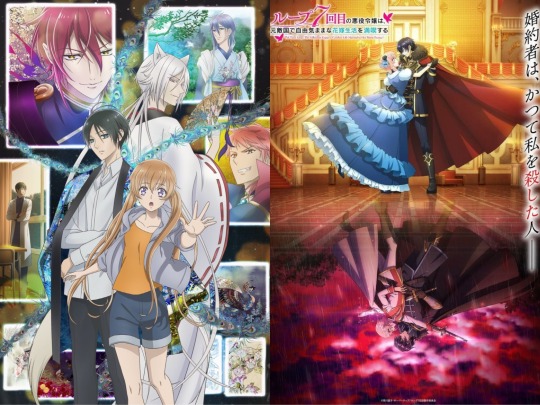
Isekai de Mofumofu Nadenade suru Tame ni Ganbattemasu Airs January 1st
Kyuujitsu no Warumono-san Airs January 8th

Yubisaki to Renren Airs January 6th
Watashi no Shiawase na Kekkon: Watashi no Shiawase na Katachi Airs March 15th
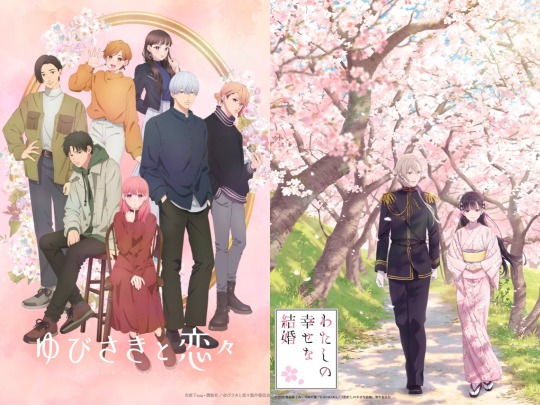
Gekai Elise Airs January 10th
Akuyaku Reijou Level 99: Watashi wa Ura-Boss desu ga Maou dewa Arimasen Airs January 9th
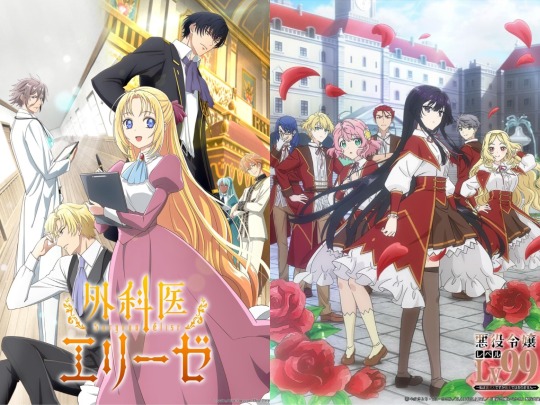
Wonderful Precure Airs February 4th
Ensemble Stars!! Tsuioku Selection Checkmate Airs March 10th
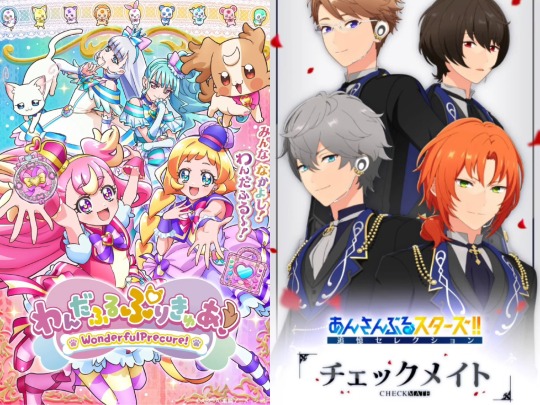
Spring Anime Season (April - June)
Hananoi-kun to Koi no Yamai Airs April 4th
Vampire Dormitory Airs April 7th
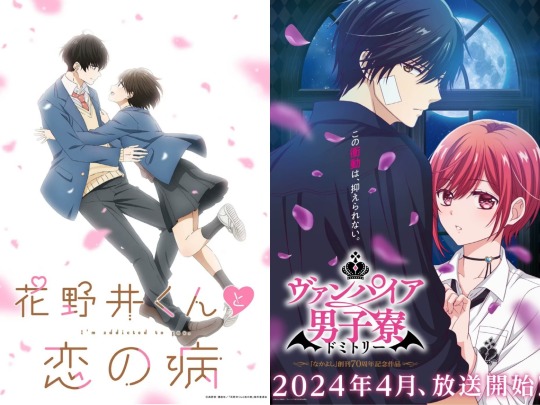
Touken Ranbu Kyoden Moyuru Honnouji Airs April 2nd
Rabbits Kingdom the Movie Airs June 14th

Tonari no Youkai-san Airs April 7th

Summer Anime Season (July-September)
Senpai wa Otokonoko Airs July 5th
Madougushi Dahlia wa Utsumukanai: Kyou kara Jiyuu na Shokunin Life Airs July 6th

Kimi ni Todoke 3rd Season Airs August 1st
Yeosin Gangnim Airs August 7th
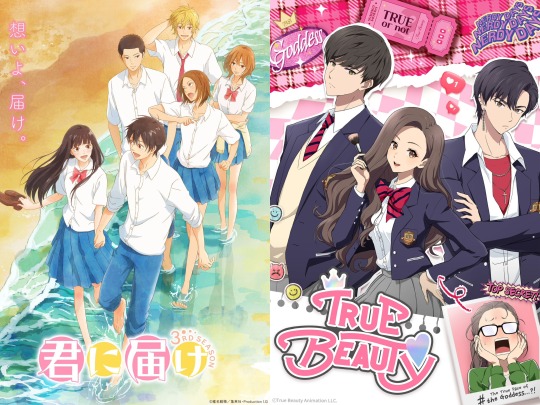
Fall Anime Season (October - December)
Hoshifuru Oukoku no Nina Airs in October
Rekishi ni Nokoru Akujo ni Naru zo: Akuyaku Reijou ni Naru hodo Ouji no Dekiai wa Kasoku suru you desu! Airs in October

Natsume Yuujinchou Shichi Airs in October
Goukon ni Ittara Onna ga Inakatta Hanashi Airs in October
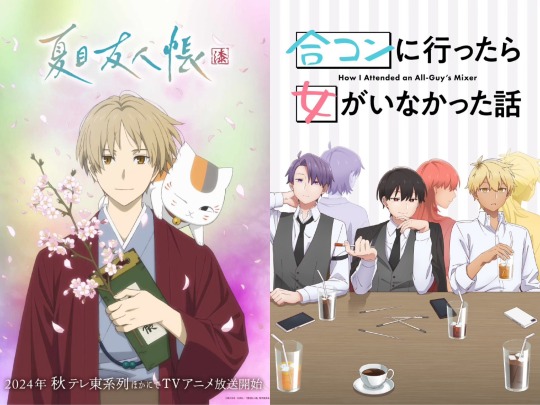
Acro Trip Airs in October
Haigakura Airs in October

Yarinaoshi Reijou wa Ryuutei Heika wo Kouryakuchuu Airs in October
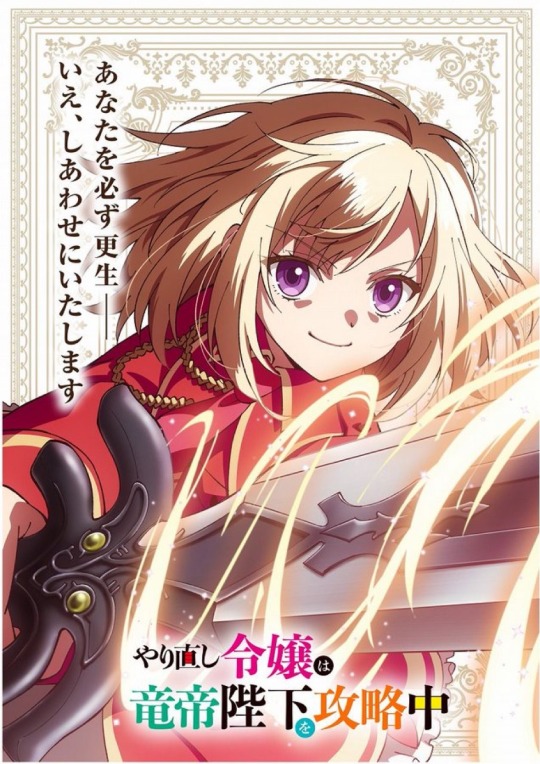
#anime#anime 2024#shojo anime#josei anime#shoujo anime#Shoujosei#shojosei anime#anime adaptation#Momochi-san Chi no Ayakashi Ouji#loop 7 kaime no akuyaku reijou wa#yubisaki to renren#isekai de mofumofu nadenade suru tame ni ganbattemasu.#mr villain's day off#Doctor Elise: The Royal Lady with the Lamp#my happy marriage#watashi no shiawase na kekkon#Hananoi-kun to Koi no Yamai#vampire dormitory#wonderful precure#mahoutsukai precure#Acro Trip#Nina of the Starry Kingdom#kimi ni todoke#Natsume Yuujinchou#akuyaku reijou level 99: watashi wa ura boss desu ga maou de wa arimasen#Yarinaoshi Reijou wa Ryuutei Heika wo Kouryakuchuu#puella magi madoka magica
53 notes
·
View notes
Text
How to read calendar dates in Japanese
I’m writing with regular numbers here, but we also use Kanji numbers for dates. Either is OK, but if it’s a two-digit number, regular numbers are easier for us to read.
1st : 1日(ついたち/tsuitachi) ×いちにち
2nd : 2日(ふつか/futsuka) ×ににち
3rd : 3日(みっか/mikka) ×さんにち
4th : 4日(よっか/yokka) ×よんにち、しにち
5th : 5日(いつか/itsuka) ×ごにち
6th : 6日(むいか/muika) ×ろくにち
7th : 7日(なのか/nanoka) ×ななにち、しちにち
8th : 8日(ようか/yoka) ×はちにち
9th : 9日(ここのか/kokonoka) ×きゅうにち、くにち
10th : 10日(とおか/tooka) ×じゅうにち、とうか(Although the pronunciation is almost same, don’t write とうか.)
11th : 11日(じゅういちにち/ju-ichi-nichi)
12th : 12日(じゅうににち/ju-ni-nichi)
13th : 13日(じゅうさんにち/ju-san-nichi)
14th : 14日(じゅうよっか/ju-yokka)×じゅうよんにち、じゅうしにち
15th : 15日(じゅうごにち/ju-go-nichi)
16th : 16日(じゅうろくにち/ju-roku-nichi)
17th : 17日(じゅうななにち/ju-nana-nichi) 〇じゅうしちにち(Ju-shichi-nichi) It’s right but confusing with 11th.
18th : 18日(じゅうはちにち/ju-hachi-nichi)
19th : 19日(じゅうくにち/ju-ku-nichi) ×じゅうきゅうにち
20th : 20日(はつか/hatsuka) ×にじゅうにち
21st : 21日(にじゅういちにち/niju-ichi-nichi)
22nd : 22日(にじゅうににち/niju-ni-nichi)
23rd : 23日(にじゅうさんにち/niju-san-nichi)
24th : 24日(にじゅうよっか) ×にじゅうよんにち
25th : 25日(にじゅうごにち/niju-go-nichi)
26th : 26日(にじゅうろくにち/niju-roku-nichi)
27th : 27日(にじゅうななにち/niju-nana-nichi) 〇にじ���うしちにち(Niju-shichi-nichi) Right but confusing with 21st.
28th : 28日(にじゅうはちにち/niju-hachi-nichi)
29th : 29日(にじゅうくにち/niju-ku-nichi) ×にじゅうきゅうにち
30th : 30日(さんじゅうにち/sanju-nichi)
31st : 31日(さんじゅういちにち/sanju-ichi-nichi)
#apothecary english#apothecary romaji#the apothecary diaries#apothecary diaries#learning japanese#japanese#japan
19 notes
·
View notes
Text
Telling the hours in Japanese

Time table, from Genki 3rd Edition
The unit of an hour is called じ (kanji: 時 / Ji) in Japanese. If you want to say a certain time, you say “number + じ / 時 (ji)”.
For example:
One o'clock = いち じ (一時) Ichi Ji
It's two o'clock = にじです (ニ時) です Ni Ji Desu
Three o'clock = さんじ (三時) San Ji
The chart below, also from Genki, illustrate from one to twelve.

*Not only 4 (Yoji) is a irregular (it's not YonJi), but also 9 (Kuji) is not it's most common form (Kyuu). In the case of 7, you could either say Shichi (しち) Ji or Nana (なな) Ji. Both are ok, but people tend to avoid Shichi (しち) Ji because it may be confused with Ichi (いち) Ji.
*時 (ji) is a unit and 時間 (jikan) is a counter for time. So, you use "時 (ji)" when you're telling the hours, as in "It's two and thirty right now", but use "時間 (jikan)" if you're talking about a specific time-frame, as in "It took me two hours to do that".
Now, look at the first chart again. The unit of minutes is called ふん (分 / fun). So, if you want to say "two minutes", you say にふん (二分 / nifun). But, if you want to say "one minute", you say いっぷん (一分 / ippun).
Numbers 1, 6 and 10 all use ぷん (pun) instead of fun;
Numbers 2, 5, 7 and 9 all use ふん (fun);
And numbers 3, 4 and 8 accept both forms.
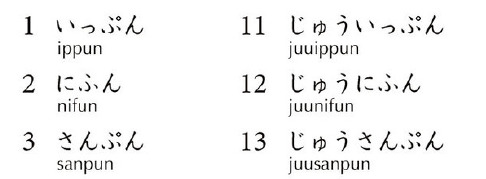
For, "Three hours and two minutes", we would have さんじ にふん.
EXERCISE
What time is it?



Answers:
12:15 = じゅうにじ じゅうごふん || 十二時 十五分
7:15 = ななじ じゅうごふん || 七時 十五分
8:30 = はちじ はん* || 八時半*
*Instead of writing 30 (sanjuppun), you can have はん (Han / 半), which means "half".
6:10 = ろくじ じゅっぷん || 六時 十分
7:15 = ななじ じゅうごふん || 七時 十五分
12:50 = じゅうにじ ごじゅっぷん || 十二時 五十分
5:05 = ごじ ごふん || 五時 五分
7:10 = しちじ じゅっぷん || 七時 十分
2:20 = にじ にじゅっぷん || ニ時 二十分
23 notes
·
View notes
Text
The look of... VII: Mukojima
Welcome to the 18th installment of this series (my 7th). This time, we’re having a look at the Geigi that work in one of Tokyo's Hanamachi: Mukojima (向島).
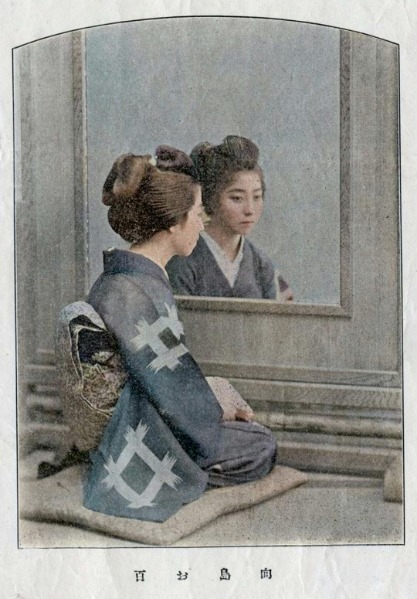
Historical context
Geisha started to live in Mukojima in the early Meiji period (1868-1912) [1]. From the Edo to Meiji period, Mukojima was a recreational area for the common people, and was frequented by Yanagibashi and Yoshiwara Geisha with their customers. [3] The earliest record of a Mukojima Geisha (known to me) is Omomo お百, who was featured in "Contemporary Beauties", 1897 [2].
In 1906, 30 Geisha lived in the area. By 1928, their number had increased to 239. In 1940, several Kenban united, further increasing the number of Mukojima Geisha to 1300. Like in all Hanamachi around Japan, their number declined steadily after the second world war. In 1951, their number was 600, in 1993 240 [7], in 1996 170, in 2007 120 [3], in 2020 around 90 [4]. This makes Mukojima approximately as populated as Gion Kobu and Tokyo's largest Hanamachi.
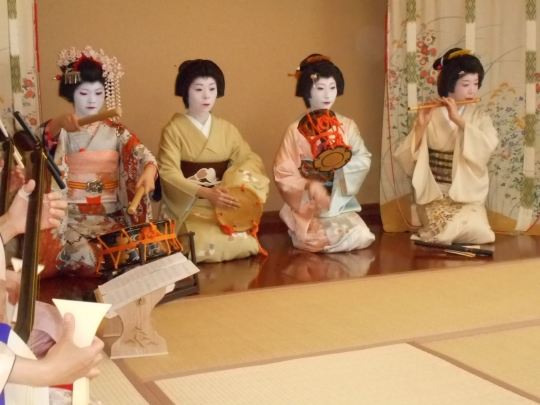
The look of Mukojima Geiko. Local Term: Geisha 芸者
※ Hairstyle: Taka shimada, Tsubushi shimada
※ Kanzashi: Kushi, Maezashi, Hirauchi or Tama in the back, rice husk in the new year period
※ Makeup: Oshiroi
※ Kimono: everyday Kimono: Homongi. Kuromontsuki Hikizuri mostly in the new year period or for Erikae, rarely non-black Hikizuri.
※ Haneri: white
※ Obi: Taiko musubi, Yanagi musubi with Kuromontsuki Hikizuri, Tsunodashi musubi with other Hikizuri
※ Obijime: mostly light-coloured. No obijime with yanagi musubi
※ Obiage: mostly red, pink, or white. Seldomly turquoise, white/green, white with red shibori (red/red-white shibori with Kuromontsuki)
※ Footwear: mostly Zori, also Geta



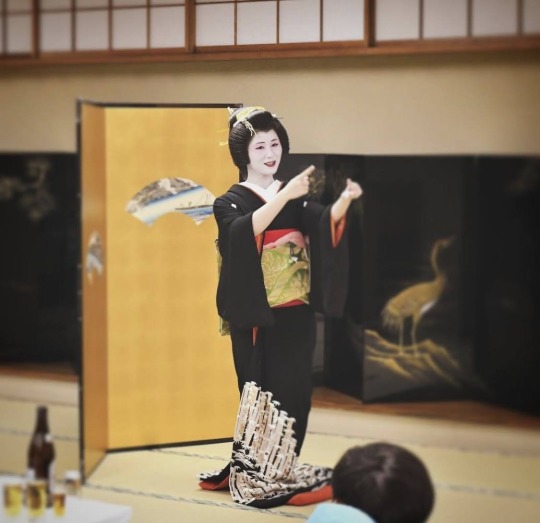
Casual/Jikata look
※ Hairstyle: Yohatsu
※ Kanzashi: none
※ Makeup: western makeup
※ Kimono: Homongi, Kurotomesode
※ Eri: white
※ Obi: Taiko musubi
※ Obijime: mostly light-coloured. In rare cases with pocchiri
※ Obiage: white with red shibori, pink, white, pink/turquoise
※ Footwear: Zori
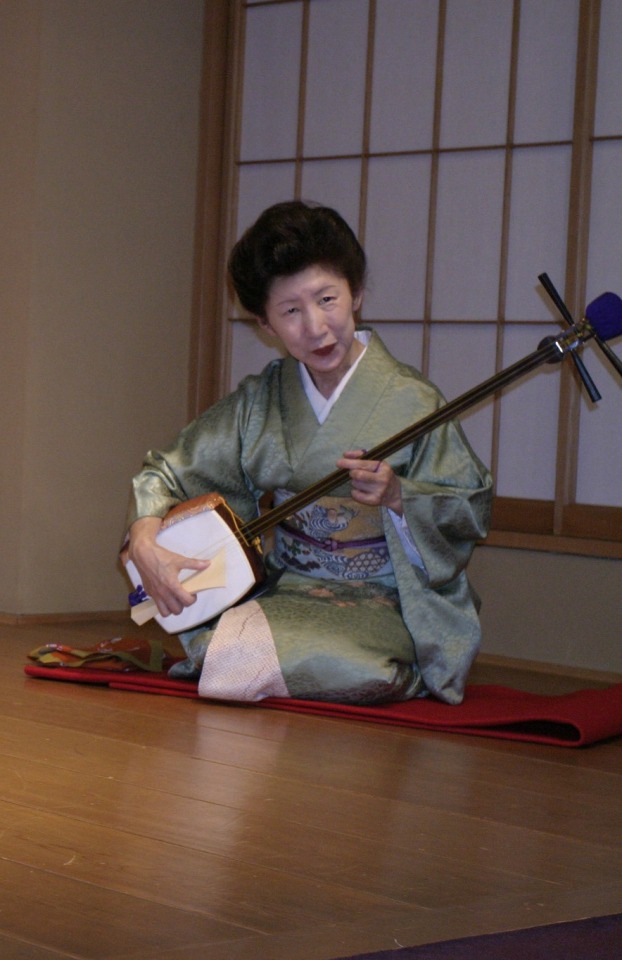
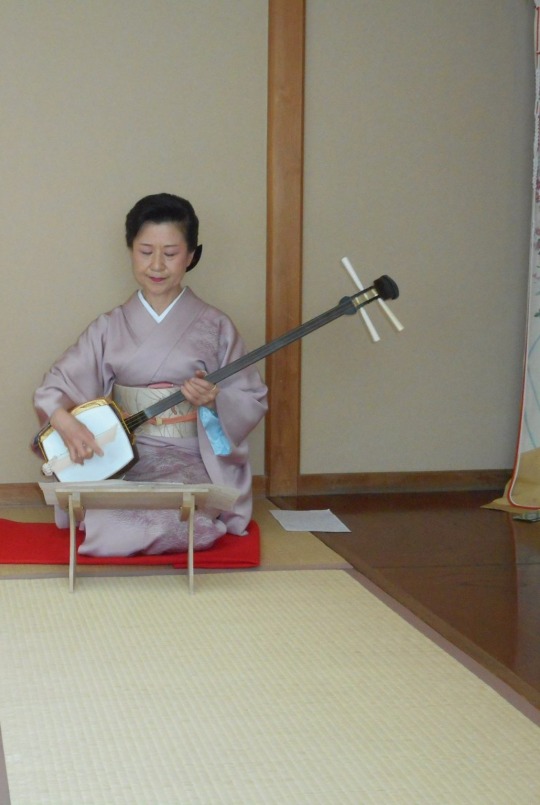
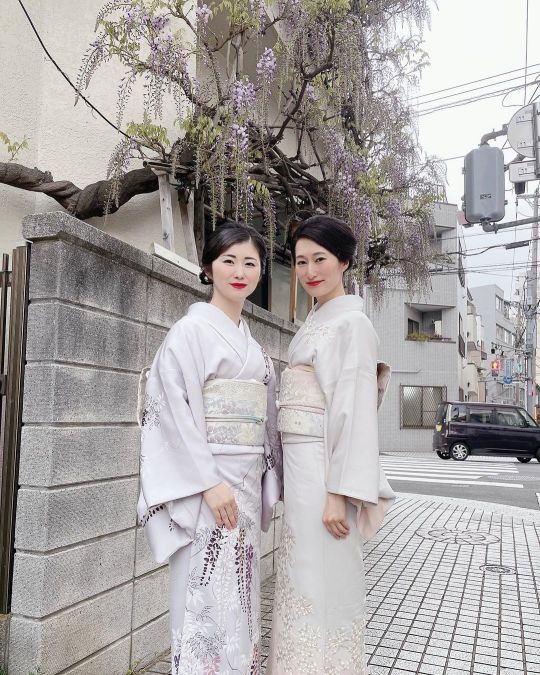
The look of Mukojima Maiko. Local term: Hangyoku 半玉
※ Hairstyle: Momoware (own hair or wig), Yuiwata for senior Hangyoku (only wig). Shibori, Kanoko and Chinkoro are mostly red, but can also be pink during summer.
※ Kanzashi: seasonal flower kanzashi (1-2 Daikan, Katsuyama, 1-2 Bira-Ôgi, Shidare popular during the entire apprenticeship), Maezashi (optional), Hirauchi. Minimal flower kanzashi with Yuiwata.
※ Makeup: Oshiroi, both lips painted from the start
※ Kimono: Furisode with or without tucks (all variations possible)
※ Eri: mostly white or red/white. But also pink/red, red/purple/green on white base, pink, green, black/pink/white, etc., etc.
※ Obi: kôken musubi
※ Obijime: light-coloured. sometimes with pocchiri
※ Obiage: most common colour variations are red/silver, or red/white shibori. But there are many other combinations.
※ Footwear: mostly Okobo (with red or pink straps), Zori
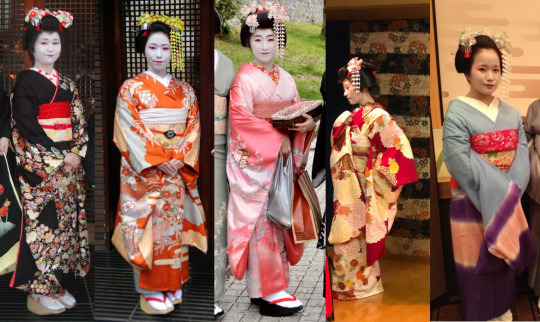
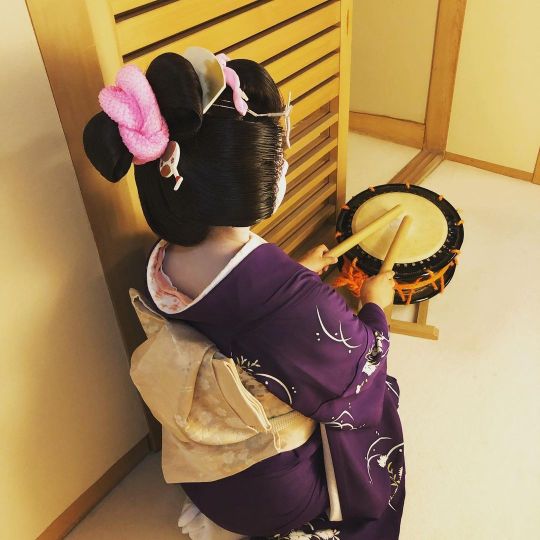
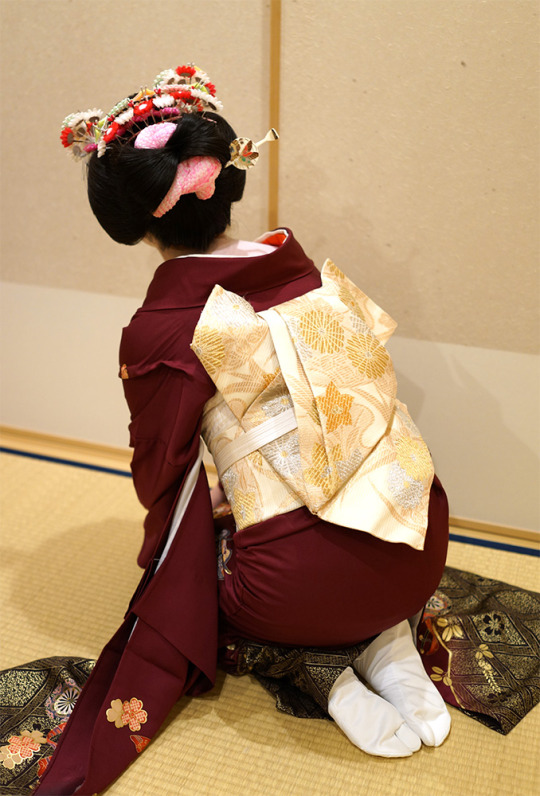


Dances [6]
Some dances that are local speciality of Mukojima:
※ Asazuma bune かさずまぶね
※ Fuji musume 藤娘
※ Fukagawa Kuzushi 深川くずし
※ Gorô ごろう
※ Mukojima ondo 向島音頭
※ O-Sumio お角力
※ Otemoyan おてもやん
※ Sôran bushi ソーラン節
※ Yosakuraya 夜桜や
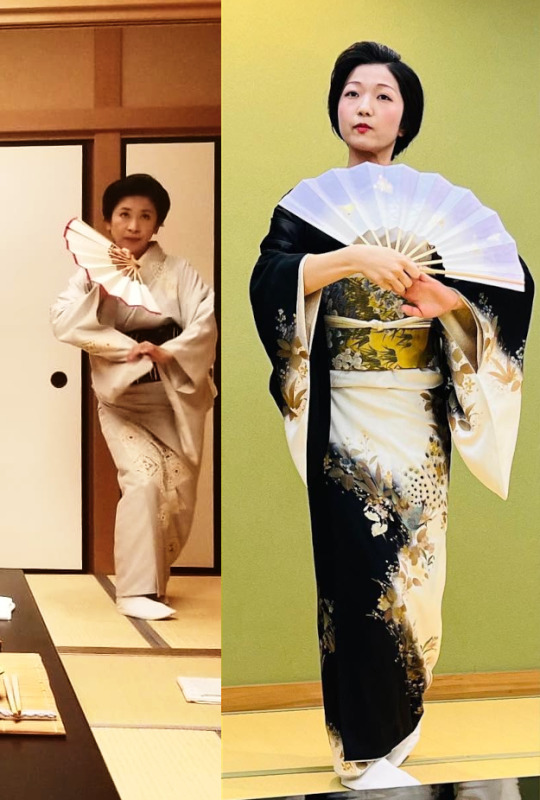
Others that you can also see in Ozashiki outside of Mukojima:
※ Ayame Yukata 菖蒲浴衣
※ Echigo Jishi 越後獅子
※ Hanami Odori 花見踊り
※ Hatsuharu 初春
※ Ina bushi 伊���節
※ Kiyari Kuzushi 木遣りくずし
※ Sawagi さわぎ
※ Setsuhonkaina せつほんかいな
※ Shichi fukujin 七福神
※ Takeda bushi 武田節
※ Tatsumi no hidarizuma 辰巳の左褄
※ Tsurukame 鶴亀
※ Yakkosan 奴さん
※ Yoshiwara Suzume 吉原すずめ

Notes
Mukojima allows part-time workers, calling them Kamome かもめ [5]. Most of them are students or work in a different job already. Their task is mainly assisting Geisha/Hangyoku in the Ozashiki. Kamome can become Hangyoku or Geisha if they wish to work full-time. Mukojima dancers also play instruments at ozashiki: Hangyoku frequently play shime-daiko, Tachikata more often play ko-tsutsumi, sometimes fue. Shamisen seems so be reserved for Jikata.
Usually, Ryotei and Okiya are separate businesses in Tokyo. In Mukojima, however, several Ryotei also function as Okiya [3], similar to how in Kyoto, several Ochaya also have an attached Okiya.

Sources - Text
[1] Foreign Press Center Japan, Mukojima Press Tour April 2006 https://fpcj.jp/en/assistance-en/tours_notice-en/p=6744/
[2] https://www.flickr.com/photos/blue_ruin_1/28442353867/
[3] numbers 1906-1951, 1996-2007: Sumi Asahara "Tokyo Rokkagai", 2007
[4] not an exact number (account required) https://www.tapatalk.com/groups/tsurukomaiko/hanamachi-population-reference-wip-t2000.html
[5] Kamome http://sengoku-japan.com/
[6] dances compiled at Tsurukomaiko, it's by no means a complete list (account required) https://www.tapatalk.com/groups/tsurukomaiko/list-of-dances-in-all-hanamachi-t1988.html
[7] 1993: Tsuiseki (追跡): The World of the Geisha, ca. 1993 https://www.youtube.com/watch?v=bkhRWNDwTyM
Sources - Pictures
Omomo ※ Kingyo Ozashiki ※ Momoka ※ Komachi ※ Yuki+Otokichi ※ Chikage ※ Senyume ※ Hiroya ※ Chikage+Natsuki ※ Tamaki ※ Shingetsu ※ Natsuki (twitter) ※ Soraka (insta) ※ Tomoka ※ Kingyo (fb) ※ Teruka 2x ※ Kanzashi ※ Kintaro (insta) ※ Ayame ※ Kingyo+Rin Ozashiki (fb) ※ Sakura matsuri 2023
I tried to trace back all pictures. If you find the missing links, let me know.
"The look of" other Hanamachi:
Yamagata, Tokyo Yoshicho, Niigata, Atami, Gifu, Tokyo Kagurazaka, Arima Onsen, Tokyo Asakua, Nagoya, Tokyo Shinbashi, Anjo
I Osaka Kitashinchi, II Tokyo Akasaka, III Osaka Nanchi, Fukuoka, V Yuzawa, VI Morioka
More Mukojima content: https://maigeiko.tumblr.com/tagged/mukojima
Layout: @geimaiko, thanks as always! ♥
70 notes
·
View notes
Text
How to count people in Japanese
1 person : 一人(ひとり/hitori) ×いちにん
2 people : 二人(ふたり/futari) ×ににん
3 people : 三人(さんにん/san-nin)
4 people : 四人(よにん/yo-nin) ×よんにん、しにん(Never read as “しにん”, as it means 死人: dead person)
5 people : 五人(ごにん/go-nin)
6 people : 六人(ろくにん/roku-nin)
7 people : 七人(ななにん/nana-nin or しちにん/shichi-nin)
8 people : 八人(はちにん/hachi-nin)
9 people : 九人(きゅうにん/kyu-nin or くにん/ku-nin)
10 people : 十人(じゅうにん/ju-nin)
11 people : 十一人(じゅういちにん/ju-ichi-nin)×じゅうひとり
12 people : 十二人(じゅうににん/ju-ni-nin)×じゅうふたり
13 people : 十三人(じゅうさんにん/ju-san-nin)
14 people : 十四人(じゅうよにん/ju-yo-nin)×じゅうよんにん、じゅうしにん
15 people : 十五人(じゅうごにん/ju-go-nin)
16 people : 十六人(じゅうろくにん/ju-roku-nin)
17 people : 十七人(じゅうななにん/ju-nana-nin or じゅうしちにん/ju-shichi-nin)
18 people : 十八人(じゅうはちにん/ju-hachi-nin)
19 people : 十九人(じゅうきゅうにん/ju-kyu-nin or じゅうくにん/ju-ku-nin)
20 people : 二十人(にじゅうにん/niju-nin)
21 people : 二十一人(にじゅういちにん/niju-ichi-nin)×にじゅうひとり
22 people : 二十二人(にじゅうににん/niju-ni-nin)×にじゅうふたり
:
There is one more way of counting, with “名(mei)”.
For example, when you enter a restaurant for dinner, the waiter will ask, “何名様ですか?(Nan-mei-sama desuka?)” which means “How many people are there?”
The difference between “人(nin)” and “名(mei)” is that “人(nin)” is just for counting, and “名(mei)” is used for groups or organizations whose members are identifiable, such as number of attendants of the meeting, number of guests reserved at the hotel, number of guests at the wedding, and so on.
In case of “名(mei)”, reading way of counting is simply number + 名(mei).
1 person : 一名(いちめい/ichi-mei)
2 people : 二名(にめい/ni-mei)
3 people : 三名(さんめい/san-mei)
4 people : 四名(よんめい/yon-mei) ×しめい
5 people : 五名(ごめい/go-mei)
6 people : 六名(ろくめい/roku-mei)
7 people : 七名(ななめい/nana-mei) 〇しちめい/shichi-mei(It’s right but confusing with いちめい/ichi-mei)
8 people : 八名(はちめい/hachi-mei)
9 people : 九名(きゅうめい/kyu-mei) ×くめい
10 people : 十名(じゅうめい/ju-mei)
:
(The last digit of any number beyond that is the same as above.)
If you feel it hard, you can use just “人(nin)” anytime. It’s enough if you can understand “名(mei)” when you hear it.
―――――――――――――――――――――――――――――――
From the episode 20 “Pretend Family”…
しのぶ「可愛いお嬢さん、あなたは何人殺しましたか?」
Shinobu “Kawaii Ojosan, anatawa nan-nin koroshi-mashitaka?”
Shinobu “Sweet young girl, how many people have you killed?”
姉蜘蛛「……五人。……でも命令されて、仕方なかったのよ」
Ane-Gumo “……Go-nin. ……Demo meirei sarete, shikata nakatta-noyo.”
Big Sister Spider Demon “Five. But I was ordered to! I had no choice!”
しのぶ「嘘は吐(つ)かなくて大丈夫ですよ。わかってますから。さっきうちの隊員を繭にした術さばき、見事でした。八十人は喰っていますよね?」
Shinobu “Usowa tsuka-nakute daijobu desuyo. Wakatte-masu-kara. Sakki uchino Taiin’o mayuni shita jutsu-sabaki, migoto deshita. Hachiju-ninwa kutte imasu-yone?”
Shinobu “There’s no need to lie about it. Because I already know. That spell you cast to turn one of our men into a cocoon was most impressive! You’ve devoured at least eighty humans, haven’t you?”
姉蜘蛛「……喰ってないわ、そんなに。殺したのは五人よ」
Ane-Gumo “……Kutte-naiwa, sonnani. Koroshita-nowa go-nin’yo.”
Big Sister Spider Demon “No, of course I haven’t eaten that many. I only killed those five.”
しのぶ「私は西の方から来ましたよ。お嬢さん、西です。山の西側では、大量に繭がぶら下がっているのを見て来ました。中に捕らわれた人々は液状に溶けて全滅。その場所だけでも、繭玉は十四個ありました。十四人、死んでるんです」
Shinobu “Watashiwa nishino-hokara kima-shitayo. Ojosan, nishi desu. Yamano nishi-gawa-dewa, tairyoni mayuga bura-sagatte-iru-no’o mite-kimashita. Nakani tora-wareta hito-bitowa eki-joni tokete zen-metsu. Sono basho-dake-demo, mayu-damawa ju-yon-ko ari-mashita. Ju-yo-nin, shin-derun-desu.”
Shinobu “But I came here from the west, you know. The west, my dear. On the west side of the mountain, I saw hordes of cocoons hanging from the trees. The human captives inside had been liquefied. All massacred. In that spot alone, I counted at least fourteen cocoons. Fourteen humans. All dead.”
―――――――――――――――――――――――――――――――
#demon slayer#demon slayer romaji#kimetsu no yaiba#demon slayer script#kimetsu english#kimetsu romaji#learning japanese#kny#japan
9 notes
·
View notes